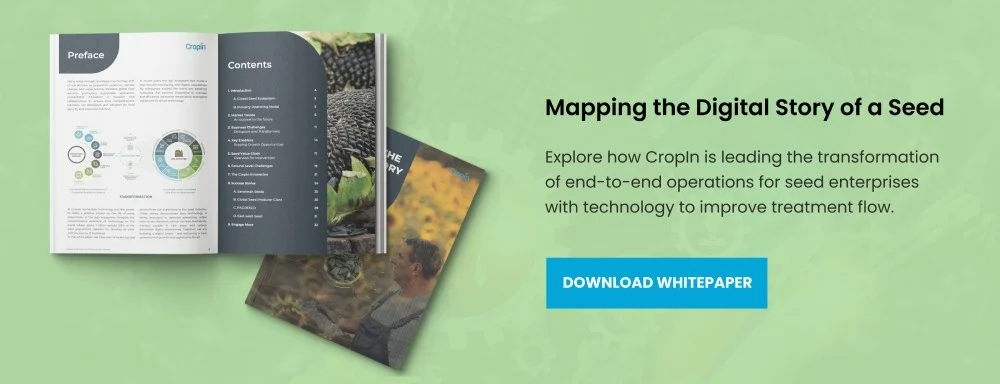Vertical Farming

Vertical Farming- Bridging the gap between the demand and supply of food
A growing population places increasing demand on food availability. As farmers struggle with bridging the gap between demand and supply of crops using traditional farming methods, more innovative and efficient cultivation techniques continue to surface. One of these methods is vertical farming.
Given the recent advancement in technologies, more agri-businesses and cultivators are inclining towards this farming method to enhance productivity and availability of quality food. Read on to know more.
What is Vertical Farming?
This farming method uses Controlled Environment Agriculture (CEA) technology to monitor required humidity, temperature, gases, and light in indoor conditions. For instance, farmers use artificial lighting and metal reflectors to mimic natural sunlight.
How does it work?
- Layout: As already mentioned, farmers cultivate crops on tower-like structures to maximize food production while limiting resource usage.
- Light: Cultivators use a combination of artificial and natural light, along with technologies like rotating beds to ensure optimum lighting efficiency.
- Sustainability: Vertical farming intends to minimize the exhaustion of natural resources. As a result, this farming technique recycles irrigation water to minimize usage by up to 95%. At the same time, farming indoors requires negligible agrochemicals, thereby saving more resources.
- Growing medium: Vertical farming uses soilless agriculture, such as aquaponics, aeroponics, and hydroponics. Cultivators also commonly use coconut husks and peat moss as growing mediums.
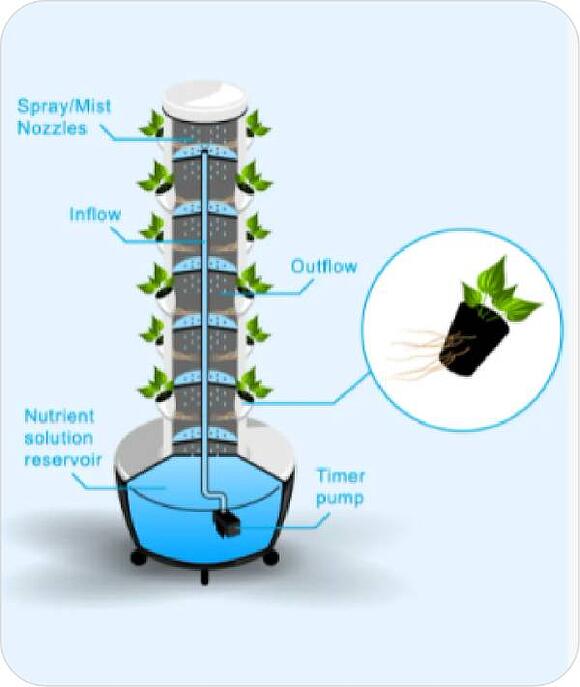
Learn how digitalizing farm operations can boost productivity and profitability.
Techniques of Vertical Farming
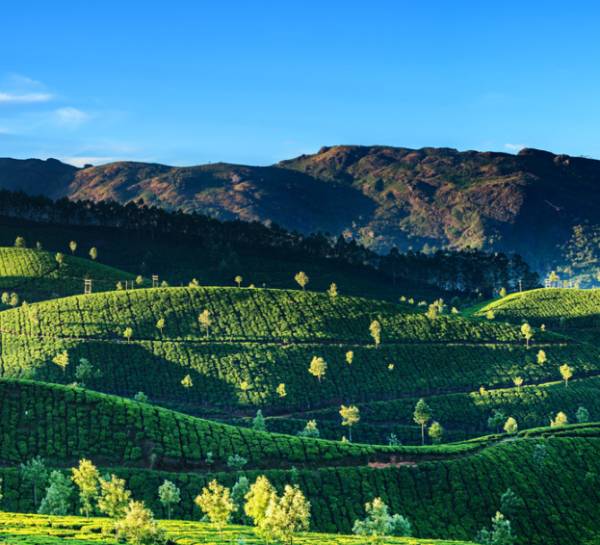
Hydroponics

Aquaponics

Aeroponics
Vertical Farming- The Future of Agriculture?
The main objective of vertical farming is to maximize yield against minimal usage of natural resources. It promotes precision agriculture as well as sustainable agriculture way more than traditional techniques of cultivation.
Here, the vertical method of cultivation aims to overcome the challenges posed by conventional farming techniques. These are –
- Unpredictable climatic conditions: Vertical farming involves growing crops indoors under controlled environmental conditions. It enables farmers to cultivate crops all year round without the risk of yield loss to adverse weather conditions.
- Plant diseases: Controlled indoor conditions of cultivation, including non-soil growing mediums, minimise the occurrence of pest infections or genetic crop diseases. In turn, this helps farmers limit the usage of crop protection products.
- Long supply chain: The nature of vertical farming allows cultivators to set up farms in urban locations with extensive transport networks. It reduces the distance, time, and the middlemen involved for end-products to reach customers.
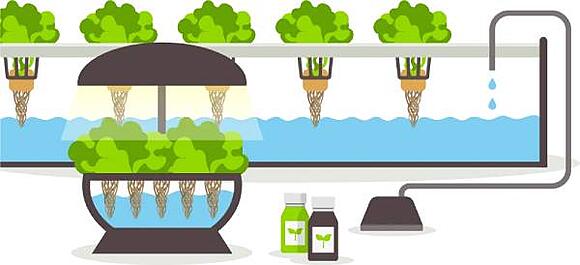
Advantages of Vertical Farming

Optimum space usage
Traditional farming methods demand acres of plain and fertile land. However, that is not the prerequisite for vertical cultivation techniques. As already mentioned, this farming method uses stacks of vertically inclined surfaces to grow crops. Also, these crops can grow in all sorts of conditions and areas since they use non-soil mediums. Plus, they can prosper even under adverse climatic conditions and extremities.

Reduced transportation cost
Urban location of vertical farms make their delivery points easily accessible. Unlike traditional farming, crop producers need not ship end-products across multiple countries and oceans. They can instead set up farms in areas close to their customer locations. It shortens the supply chain, thus reducing transportation charges and carbon footprint.

Consistent and higher crop yield
Probably, the most advantageous feature of vertical farming is reliable crop production for 365 days as such farming techniques are independent of external factors like sunlight, seasons, water, and area, among others. Such consistent crop production also leads to an overall higher yield. Cropin's SmartFarm and SmartRisk are efficient solutions for digital farming to help farmers predict crop output accurately.

Lower water usage
Since vertical farming involves hydroponic growing methods, it reduces water needs for irrigation. Moreover, the used water is utterly clean even after usage, making it recyclable for the next farming cycle. As a result, such farming methods use only 10% of the provided water.

Zero agrochemical usage
Growing crops under controlled environmental conditions eliminates the entry of disease-causing pests or weeds. In turn, this reduces the crop protection products a farmer might need otherwise. As a result, the end-product also becomes safer for consumption, adding to food safety.

Energy efficiency
Some vertical farms have in-built power generation units, which lower power consumption costs and help reduce carbon footprint. Additionally, other farms can get in touch with organizations employing renewable technologies to combine power and heat to produce enormous clean energy. Farms can also use the excess energy to power other business equipment or transfer it to their concerned power grid.

Minimized occupational hazard
Besides being sustainable, vertical farming also reduces occupational risks associated with operating heavy farming equipment. Similarly, they need not deal with harmful agrochemicals and disease-causing microbes. This farming method also promotes biodiversity as it does not affect plants and animals in surrounding areas.

Reduced labor costs
Vertical method of cultivation is almost entirely dependent on technology. Therefore, a farm adopting a completely-automated mode of operation will need a negligible human workforce. Overall lower labour costs help farmers enjoy a higher yield against reduced labour charge, thus maximising gains.
Disadvantages of Vertical Farming

High technological dependency
Vertical farming is highly dependent on technology which requires farmers to invest heavily in diverse technologies and equipment to monitor moisture, lighting, temperature, and other parameters. However, failure of any one piece of equipment can disrupt the entire cultivation process, for the time being, thus minimizing produce. Also, several farming experts believe that our modern-day agriculture technologies are not advanced enough for the smooth operation of vertical farming.

Reduced pollination
While farming under controlled environmental conditions prevents the undesirable entry of pests, it also hinders natural pollination by bees, butterflies, beetles, birds, and other pollinators. Here, farmers need to adopt manual pollination, which can be a costly and troublesome affair.
Vertical Farming in India
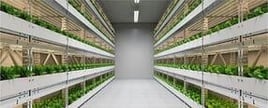
India has hopped onto this farming trend, with various entrepreneurs setting up indoor-farming areas.
Vertical farming in India is mostly poly-house based, resulting in higher yields. There are several factors contributing to this farming method’s popularity. These are –
- Ever-rising population: The current Indian population stands at 1.27 billion and could potentially rise by 25% by 2036 as per the National Commission on Population (NCP). An increasing population demands greater food availability.
- Land scarcity: India is currently experiencing desertification and land degradation, resulting in scanty land availability. Vertical farming can be an innovative solution to overcome this issue.
- Water consumption: Farmers utilize 84% of the total available water for irrigation in the country. Technologies like aquaponics are expected to reduce water consumption by up to 95%.
There are several existing vertical farming start-ups in India aiming to address food scarcity in urban agglomerations. One such technology-based platform is Cropin which promotes sustainable precision farming via several of its products.
Considering how much we have achieved with vertical farming and its ample scope for effortless, sustainable agriculture, the Asia Pacific region may experience a 29% growth rate by 2026. Further research and progress in the field will only aid in vertical farming becoming the future of agriculture.

